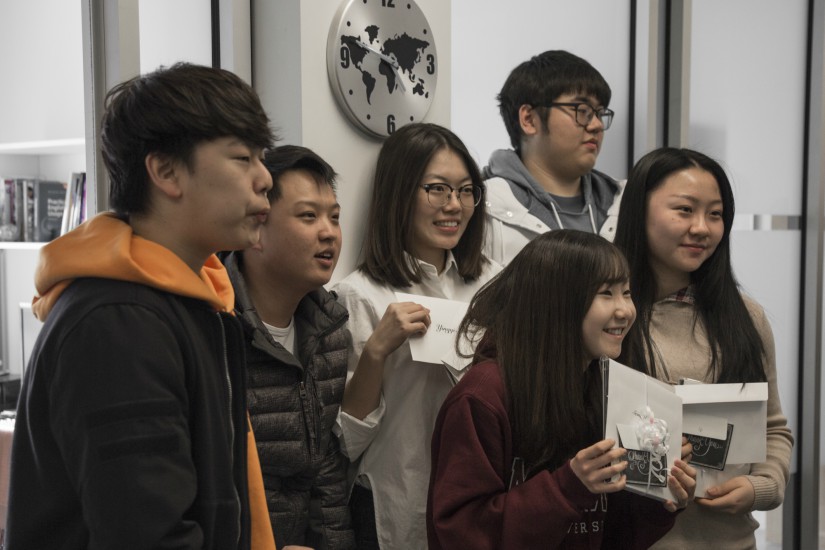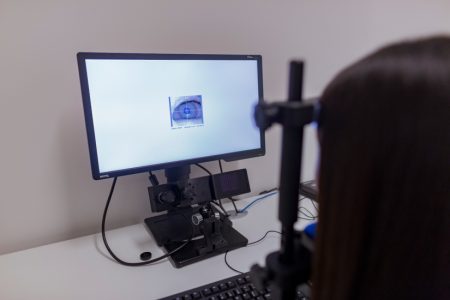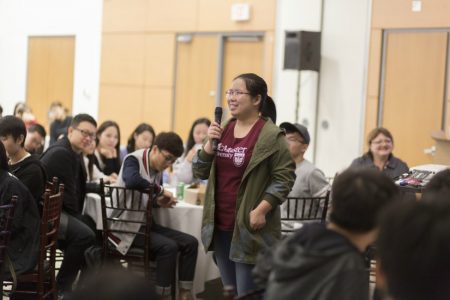MELDing ESL instruction with cutting-edge research

BY Sara Laux
May 8, 2018
MELD – the McMaster English Language Development diploma – is a program with a difference.
On the surface, it looks much like the English bridging programs offered by many other institutions: two semesters of English instruction designed for international undergraduate students who meet the academic requirements for a program but whose scores on international standardized tests aren’t high enough to meet the university’s English language requirements.
Students who enrol in MELD are given a conditional acceptance to the McMaster program of their choice – as long as they successfully complete the MELD program. They take courses that are designed to get them comfortable with using English for academic purposes, and get elective credits they can then apply when they enter an undergraduate program.

And that’s where most of the similarities stop. That’s because MELD isn’t just about learning English – it’s also focused on learning about how people learn English, and using that information to improve the program itself and contribute to scholarship on language learning.
“The original vision of the program was to have it linked to an academic department,” explains Anna Moro, associate dean in the Faculty of Humanities, a professor in the Linguistics and Languages department and MELD’s program director. “That was so we could incorporate research into the program from the beginning – learn about this particular type of second-language learner and use that research to continuously assess and adapt our instruction. I don’t know of any other program like ours.”
So far, the research has focused on reading ability, and whether it improves over the time spent in the MELD program – assessments that aren’t generally a part of these types of bridging programs. Moro’s research team, co-led by Daniel Schmidtke, a postdoctoral fellow, worked with 35 volunteers from the 2015-2016 cohort on a pilot program to assess whether their reading got better after two semesters in MELD.
Schmidtke used eye-tracking technology – which provides a visualization of where someone’s eye moves on the page as they read, as well as how long they spend on each word – to gauge students’ reading behaviour, assessing how long they spent reading passages of varying complexity, as well as the likelihood that they would skip over words as they read. Students were tested at the beginning and end of the program.

Schmidtke found that students improved their reading proficiency most if they’d had high speaking scores on the International English Language Testing System (IELTS), one of the most common tests for English proficiency, prior to enrolling in MELD. As well, the more their vocabulary expanded over the course of two semesters, the more their reading comprehension scores improved.
Since then, MELD researchers further tested other cohorts, carefully measuring vocabulary knowledge, phonological processing skills (knowledge of the sound patterns of a language) and reading comprehension. Students are now provided with the results of their assessments to demonstrate their progress over the course of the program.
The research has also started to inform the program’s activities: MELD introduced a speech clinic this year, for example, to help students learn how to better wrap their mouths around unfamiliar sound combinations. The program also expanded its weekly book club sessions and added weekly structured conversation circles, both of which ran at capacity this year.
“There’s lots of research from psychologists and linguists on reading and reading development,” explains Moro. “We know a lot less about adult readers who are at a certain level. Our students aren’t your average second language learners – they’re aspiring for academic use, and context, and that’s very different from someone who might learn a second language because they want to travel for the summer.”
It’s not just the focus on research that makes MELD different, though. Moro knew that she wanted to take the program beyond language learning and incorporate ways to help students navigate an unfamiliar culture as well as build a sense of community.

“We aren’t interested in assimilation, but acculturation – helping students navigate this community and this cultural context,” she says. “We also want them to build a connection to the university and develop a real sense of place.”
This is partly because Moro has seen that students’ success – moving out of the MELD program and progressing through a standard undergraduate program – is associated with a feeling of connection both to each other and to the wider university.
To that end, students in the MELD program participate in a mandatory number of co-curricular activities, both with other MELD students and within the larger university community. The program also has an embedded mentorship program, where upper-year undergraduate students can get elective credits for mentoring a MELD participant. The program’s centralized facility, housed in L.R. Wilson Hall, has been instrumental in heightening students’ sense of community.
MELD offers free tutoring and the services of writing coaches to students who may need extra support, but it’s not all about academics.
“The students have questions on how to talk to people in everyday life,” Moro points out. “We’ve run a series of workshops on conversational best practices – how to talk to a friend, what’s appropriate when you first meet someone, and how to talk to your doctor or your landlord. The students guide what we offer with the questions they ask.”
Students have also taken the initiative to hold their own community activities, forming a MELD student association and holding a talent show this year.
Moro’s “full-service” approach to ESL instruction is definitely working. For the 2014-2015 cohort – the first students through MELD – there was a 100 per cent retention rate from their first year of regular undergraduate studies into their second, and a 97 per cent retention rate into third year. That first cohort will graduate next year. The same first- into second-year retention rate was true for the 2015-2016 cohort.
“I’m not sure that other programs like this track retention rates as closely as we do,” explains Moro. “But for us, it’s how we gauge whether our program is working – we’re interested in doing things that are in the best interests of the students, the university and the program. We prioritize delivering quality and we want to do what’s right for our students.”


